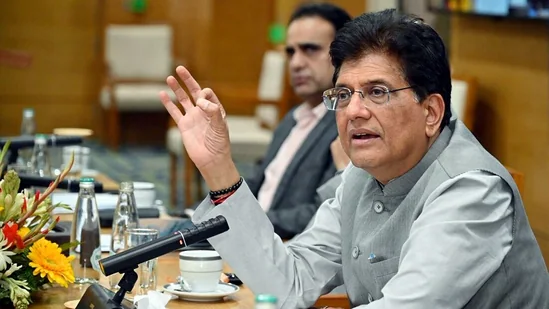HAL’s Tejas Mk1A Takes Flight: India Prepares for a New Era in Indigenous Air Power
- MGMMTeam

- 4 hours ago
- 4 min read
India’s indigenous fighter jet programme achieved a significant breakthrough as Hindustan Aeronautics Limited (HAL) confirmed that deliveries of the Tejas Mk1A will begin within the next 24 to 36 months. This marks the beginning of a long-awaited expansion of the Indian Air Force’s (IAF) fighter strength through domestically engineered aircraft. The Tejas Mk1A is the most advanced variant of the Light Combat Aircraft (LCA) programme developed so far, and HAL’s announcement follows the finalisation of a crucial engine contract that unlocks the next phase of mass production.

Engine Deal Unlocks Production Momentum
HAL recently signed a major agreement with General Electric (GE) for the supply of 113 F404-GE-IN20 engines, which will power the first 97 Tejas Mk1A fighters. This contract removed the last major bottleneck for the programme, as decisions over engine pricing and supply timelines had delayed earlier production planning. With the engine contract now secured, HAL can stabilise its manufacturing lines and begin sequential deliveries as part of India’s broader effort to strengthen defence manufacturing under the “Make in India” vision.
A Phased Delivery Roadmap
The first phase of deliveries will include eight aircraft over the next two to three years. HAL has clarified that this slower initial tempo is intentional, as the production line is still being ramped up to full capacity. Once the line reaches operational stability, the company plans to enter a far more aggressive delivery cycle. Internal projections indicate that from month thirty-seven onwards, HAL will deliver three large tranches of twenty-four aircraft each, ensuring a steady and predictable flow of fighters into the IAF’s fleet. The final tranche of twelve aircraft is expected between months seventy-three and eighty-four, taking the programme into the early 2030s and completing one of India’s largest indigenous fighter acquisitions to date.
What Makes the Tejas Mk1A a Significant Upgrade
The Mk1A variant represents a substantial technological evolution over its predecessor. HAL and the Aeronautical Development Agency (ADA) have integrated a modern avionics architecture, an advanced radar system, and improved electronic warfare suites, enhancing both survivability and precision. The aircraft’s in-flight refuelling capability dramatically extends its endurance, allowing the IAF to deploy it across broader missions with greater operational flexibility. Engineers have also introduced upgrades to reduce maintenance time and enhance mission readiness, which makes the Mk1A not only more capable but also more cost-effective for long-term fleet sustainability.
Strategic Importance for the Indian Air Force
The induction of the Tejas Mk1A comes at a time when the IAF faces a declining squadron strength due to the retirement of older aircraft such as the MiG-21. The Mk1A not only fills this critical gap but also elevates the overall quality of the fleet with modern, indigenous technology. The strategic choice to order more than a hundred engines ensures that the IAF will have replacements and reserves over the aircrafts’ operational lifespan, indicating long-term confidence in the programme.
Boosting India’s Defence Manufacturing Ecosystem
The Tejas Mk1A programme is more than a defence purchase; it is an ecosystem-building exercise. A large network of domestic suppliers, private sector partners and specialised manufacturing units across the country are contributing parts, systems and sub-assemblies. The success of this programme is expected to encourage more indigenous platforms such as the Tejas Mk2, the Advanced Medium Combat Aircraft (AMCA) and future export-grade light fighters. With countries in Asia, Africa and Latin America showing increasing interest in affordable modern fighters, India’s aerospace industry could soon position itself as a competitive exporter.
Challenges That Remain
Despite its momentum, the programme must overcome challenges related to production speed, supply-chain synchronisation and rigorous testing cycles for upgraded systems. The leap from a small batch of eight aircraft to mass-scale tranches requires meticulous coordination between HAL, GE and domestic suppliers. Meeting certification requirements for new avionics and weapon systems will also determine the smoothness of the rollout.
The MGMM Outlook
India’s rapid stride toward self-reliance in defence is clearly visible in HAL’s latest announcement on the Tejas Mk1A, a fighter jet that represents not just technological upgrade but a renewed national confidence. With engine bottlenecks resolved through the GE F404 deal and production lines now stabilising, the programme is finally entering its execution phase. The carefully staggered delivery roadmap—beginning with eight aircraft and eventually expanding into large tranches—shows India’s determination to build a strong, sustainable fighter fleet designed on Indian soil. This is not merely an Air Force acquisition but a symbol of Bharat’s rising industrial discipline, modernised avionics capability, and the maturity of our long-term defence planning, ensuring that ageing fleets like the MiG-21 can be replaced with a platform that is both powerful and proudly indigenous.
The Tejas Mk1A stands as a reflection of the new India—strategic, self-assured, and ready to claim its place in the global aerospace market. With upgrades in radar, electronic warfare systems, refuelling capabilities and maintenance efficiency, it is clear that India is no longer relying on imported solutions to address security needs. Instead, the programme is fuelling a national ecosystem of private suppliers, high-tech manufacturers and next-generation design labs, paving the way for future projects like Tejas Mk2 and AMCA. As global interest grows from Asia, Africa and Latin America, Tejas is becoming more than a fighter jet—it is a statement that India has arrived as a capable and competitive defence innovator.
(Sources: Moneycontrol, Financial Express, Firstpost)




Comments